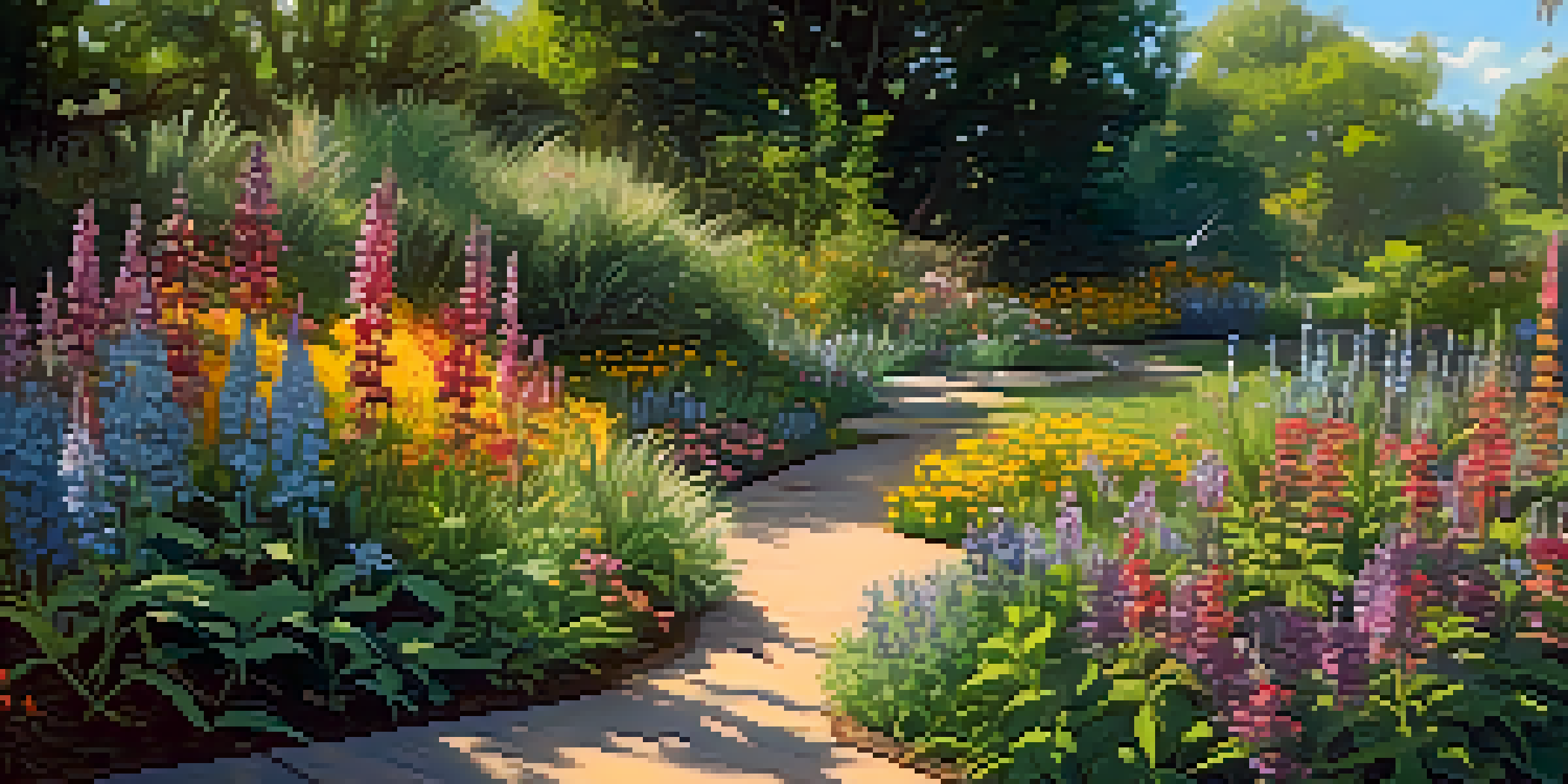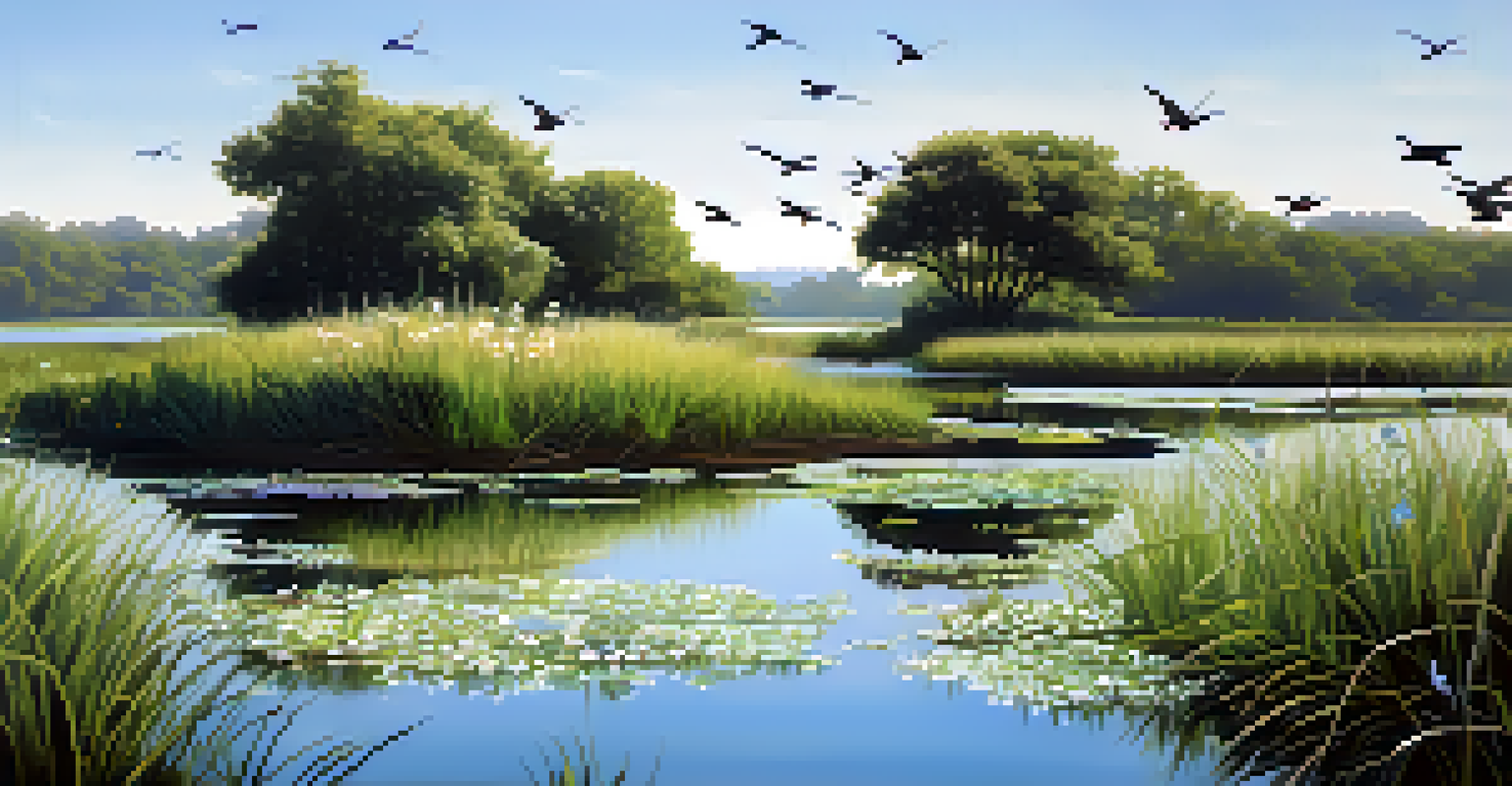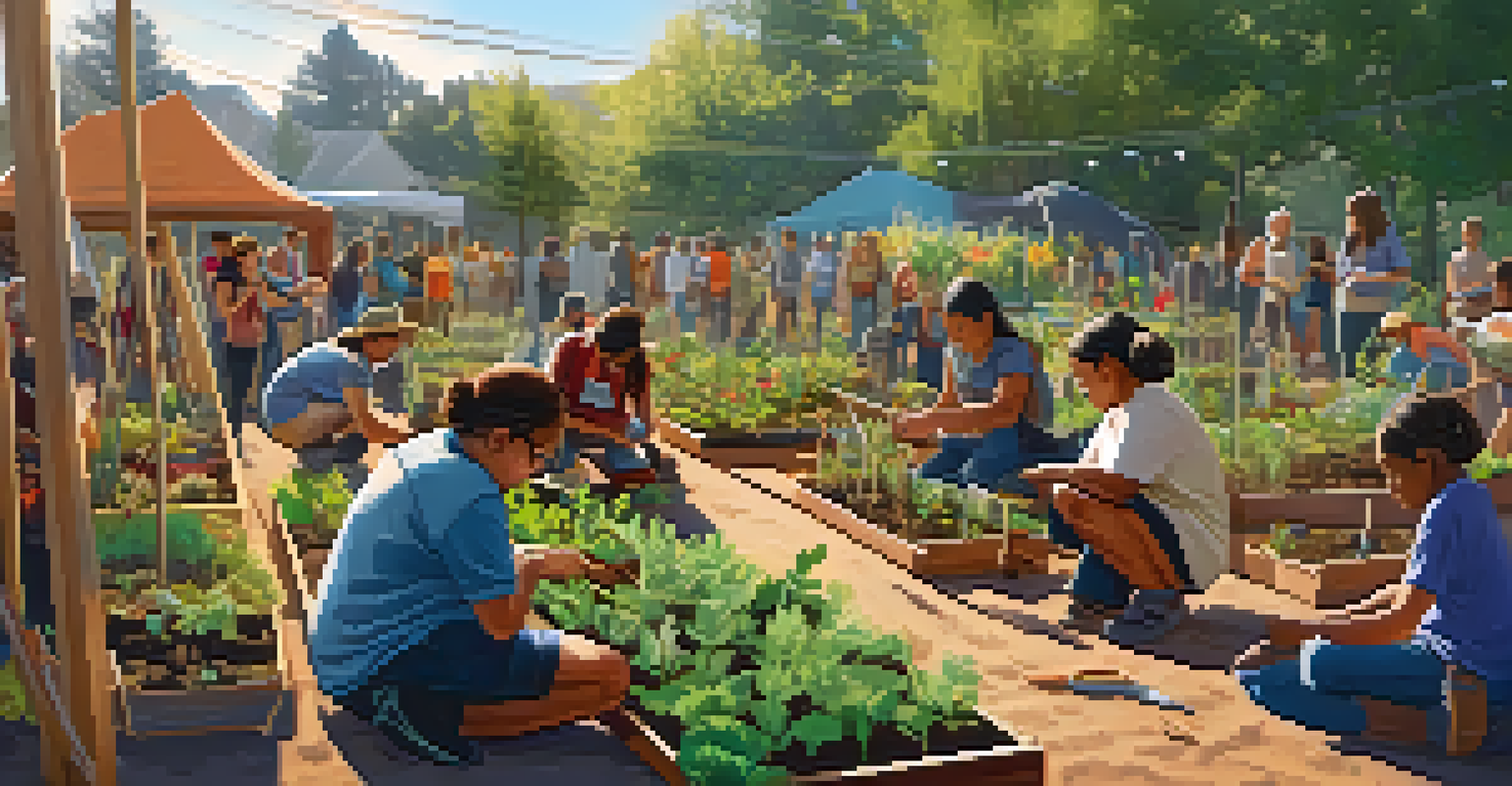Understanding the Value of Indigenous Plants in Restoration

What Are Indigenous Plants and Why Do They Matter?
Indigenous plants are those that naturally occur in a specific region without human introduction. They have evolved over thousands of years, adapting to local climates and soils, making them crucial for maintaining ecological balance. Their deep-root systems, for example, help prevent soil erosion and improve water retention.
The preservation of indigenous plants is vital for maintaining the integrity of our ecosystems and the cultural heritage of the communities connected to them.
These plants also play a vital role in supporting local wildlife, providing food and habitat for various species. When we think about biodiversity, indigenous plants are the backbone of healthy ecosystems. They create a web of life that sustains both flora and fauna, making their conservation essential.
Moreover, indigenous plants are often more resilient to local pests and diseases than non-native species. This resilience means that they require fewer resources, such as water and fertilizers, making them a sustainable choice for landscape restoration and gardening.
The Role of Indigenous Plants in Ecological Restoration
Ecological restoration focuses on returning ecosystems to their natural state, and indigenous plants are key players in this process. They help restore soil health by improving nutrient cycling and supporting beneficial microorganisms. When used in restoration projects, these plants can rejuvenate degraded lands, turning them back into vibrant habitats.

For instance, when restoring a wetland, using native plants can enhance water quality and provide natural flood control. Indigenous species are tailored to the local environment, meaning they can thrive and sustain the ecosystem where they are planted. This adaptability is essential for the success of restoration efforts.
Indigenous Plants Support Ecosystems
Indigenous plants are crucial for maintaining ecological balance, supporting local wildlife, and promoting biodiversity.
Furthermore, incorporating indigenous plants in restoration projects fosters community engagement. Local communities often have a rich knowledge of these plants, which can lead to collaborative efforts that strengthen the bond between people and nature.
Benefits of Using Indigenous Plants in Landscaping
Incorporating indigenous plants into landscaping not only enhances aesthetic appeal but also promotes environmental health. Native gardens often require less water and maintenance than traditional gardens filled with exotic species. This reduction in resource use is beneficial for both the environment and homeowners.
To plant a native garden is to embrace the beauty, resilience, and history of the land we inhabit.
Additionally, indigenous plants attract local pollinators, such as bees and butterflies, which are essential for biodiversity. A garden filled with native flora can become a haven for these creatures, contributing to the overall health of the ecosystem. This connection to nature can be both soothing and rewarding for those who tend to it.
Furthermore, using indigenous plants in landscaping can help combat climate change by sequestering carbon. These plants contribute to a healthier atmosphere while providing habitats for wildlife. By choosing native species, we can create beautiful spaces that benefit both our communities and the planet.
Challenges in Using Indigenous Plants
Despite their numerous benefits, there are challenges associated with using indigenous plants in restoration and landscaping. One major hurdle is the availability of native plant species, as many nurseries still focus on non-native plants that are more commercially popular. This can make it difficult for homeowners and landscapers to find the right indigenous plants for their projects.
Another challenge is the lack of awareness and understanding among the general public about the importance of indigenous plants. Many people are unfamiliar with the benefits these plants offer, leading them to opt for more recognizable but less sustainable options. Education and outreach are essential for overcoming this barrier.
Challenges in Sourcing Native Plants
The availability of indigenous plants is often limited due to commercial preferences for non-native species, hindering restoration efforts.
Lastly, environmental changes such as climate change can affect the viability of certain indigenous plants. As weather patterns shift, some species may struggle to adapt, making ongoing research and monitoring crucial to ensure the success of restoration efforts.
Indigenous Plants and Cultural Heritage
Indigenous plants hold significant cultural value for many communities, often serving as symbols of identity and heritage. For numerous Indigenous peoples, these plants are not just part of the landscape; they are intertwined with traditions, stories, and practices that have been passed down through generations. This cultural connection adds an invaluable layer to the importance of conserving these species.
Many native plants have practical uses as well, ranging from food sources to medicinal applications. Understanding and preserving these plants can help maintain cultural practices and knowledge that may otherwise be lost. This aspect of indigenous plants underscores the importance of integrating cultural heritage into restoration efforts.
Moreover, engaging local communities in restoration projects can foster a deeper appreciation for these plants. By involving Indigenous peoples and local residents, we can create a more holistic approach to conservation that honors both the ecological and cultural significance of native flora.
How to Incorporate Indigenous Plants into Your Garden
Starting a garden with indigenous plants is an exciting way to contribute to local biodiversity. The first step is to research which plants are native to your area, as different regions have unique ecosystems. Local extension services or native plant societies can be great resources for finding suitable options.
Once you've chosen your plants, consider creating a garden plan that mimics a natural landscape. Grouping plants with similar water and sunlight needs can help create a thriving ecosystem. Be sure to include a mix of perennials, shrubs, and, if possible, trees to provide various layers of habitat for wildlife.
Cultural Value of Native Flora
Indigenous plants are intertwined with cultural heritage, serving as symbols of identity and practical resources for many communities.
Lastly, maintain your garden by adopting sustainable practices. This includes using organic methods for pest control and avoiding synthetic fertilizers. By nurturing your garden with care, you'll not only support local wildlife but also create a beautiful space that showcases the beauty of indigenous plants.
The Future of Indigenous Plants in Restoration Efforts
The future of indigenous plants in restoration efforts looks promising, as awareness of their ecological and cultural importance continues to grow. More organizations and communities are recognizing the vital role these plants play in revitalizing ecosystems and enhancing resilience against climate change. This increasing interest can lead to more funding and support for native plant initiatives.
Additionally, ongoing research is helping to uncover the best practices for using indigenous plants in various restoration scenarios. By advancing our understanding of how these plants interact with their environments, we can develop more effective strategies for restoration projects. This knowledge will be essential as we face the challenges posed by a changing climate.

Ultimately, the future of indigenous plants hinges on collaboration among communities, scientists, and policymakers. By working together to prioritize the use of native flora, we can create a sustainable future that honors the past while nurturing our planet.